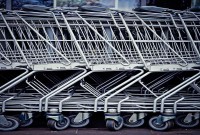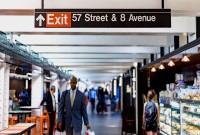- Home
- Business Processes
- Industry Knowledge
- Aerospace Industry
- Automotive Industry
- Banking Domain
- BFSI Industry
- Consumer/ FMCG Industry
- Chemicals Industry
- Engineering & Construction
- Energy Industry
- Education Domain
- Finance Domain
- Hospitality Domain
- Healthcare Industry
- Insurance Domain
- Retail Industry
- Travel and Tourism Domain
- Telecom Industry
- Leadership Skills
- eLearning
- Home
- Domain Knowledge
- Retail Industry
- Retail Industry: Strategies for overcoming challenges
Retail Industry: Strategies for overcoming challenges
To stay competitive in this ever-evolving landscape, it is imperative for retailers to deliver a seamless customer experience and provide the right services and products at the right time. Learn the strategies for overcoming challenges for the retail industry. Retailers must use technology and solutions to revive their businesses in the COVID-19 world. An omnichannel marketing strategy can help retailers reach a wider audience for their brands.
Specifically, retailers must develop an integrated strategy that aligns talent, physical space, processes, marketing, and merchandising to meet consumer demands. This strategy should be supported by emerging technologies and continually adapted to remain relevant to the customer of tomorrow. Given below are some of the strategies that the retailers can use to overcome the challenges that they are facing:
Emerging Markets:
Retailers in developed markets are facing a decline in sales and slow economic growth. In order to overcome these challenges, many retailers are looking towards emerging markets as opportunities for growth. Factors influencing this decision are mass population, younger population base, growing middle class, affordable real estate, and a gross domestic product (GDP) that is predicted to continue growing.
Customer Retention:
The transformation of the retail store begins with a deep understanding of the customer and a strategy to personalize the experience at every point of interaction. The most appropriate technologies should be leveraged to enhance the experience. The cost to acquire new customers is much higher than retaining and building the loyalty of the current ones. The challenge is to find ways to hold onto the customer's retailers already have. There are a number of steps that retailers can take to retain customers and gain their loyalty including focusing on quality, providing good customer service and resolutions to issues if any, personalization of products & services for customers, using promotions, and using customer information to personalize and reward customers on their preferences.
Mergers and Acquisitions:
Mergers and acquisitions result in economies of a larger scale that result in increased profits; better-negotiating strength enabling cost reductions. Small retailers are merging with large players, decreasing the number of competitors in the industry. Large retailers can purchase smaller companies with new innovative products and market the products under their own brand names.
Leveraging Technology:
Technology in use by retailers can be disparate and fragmented. Multiple physical locations can drive an unsustainable cost structure that is not flexible and often underperforms. Retailers can use new technologies, such as mobile devices and radio-frequency identification (RFID) as a strategy to overcome challenges in the retail industry. The popularity of mobile devices has resulted in innovative and low cost means to connect with customers through e-mail and the Internet. Retailers can use these technologies to contact their customers anytime and anywhere. A flexible IT infrastructure needs to integrate existing and emerging applications and devices.
Integrated Channels:
The retail industry is in the midst of a customer revolution and the collision of the virtual and physical worlds is fundamentally changing consumers’ purchasing behaviors as they are demanding an integrated shopping experience across all channels. Failure to deliver puts retailers at risk of becoming irrelevant. The key drivers of this customer revolution are the rapid adoption of mobile devices, digital media, and tablets equipped with shopping apps. Traditional retailers must find opportunities to seamlessly embed the virtual world into their retail strategy by developing in-store and online technologies that allow them to create and maintain meaningful and sincere connections with customers across all channels.
Mobile & Social Commerce:
Mobile commerce is an important channel for many retailers; however, its application can and should be extended from merely an online sales alternative to a tool that drives meaningful connections between the brand and the consumer. Social commerce is another critical part of the customer experience and digitally savvy retailers will devote taskforces to supporting their social media strategy. Proper management of Facebook, Twitter, and other media is vital.
Radio-frequency identification (RFID):
RFID involves equipping products with tiny chips that replace barcodes. These chips, or smart tags, contain all the information necessary to track a product on its way through the supply chain, from the factory floor to the customer's shopping bag. There are several advantages to using RFID like the ability to read a number of items simultaneously, tag, and store a lot of information and automatic data reading with no manual processing. RFID tags can mean labor savings for retailers. RFID technology can also lead to improved inventory management, as smart tags make tracking merchandise more efficient and precise. Retailers can also use RFID to improve their customers' experience.
Digital Stores:
The retail paradigm has shifted from a single physical connection point with customers to a multi-pronged approach that crosses both physical and digital channels. The traditional bricks-and-mortar retail store is no longer the dominant medium for purchasing goods. Many retailers are struggling to take advantage of the increasing number of channels available to them for connecting with customers.
Organizational Changes:
Addressing present-age consumers may require structural changes to the retail organization in order to deliver a seamless experience and drive competitive differentiation for the retailer’s brand. The key is the flexibility to quickly embrace operational changes brought about by new technologies and anticipate the integration of emerging solutions that have not yet been invented.
Trained Customer Service Staff:
Employees often lack the knowledge, training, and tools necessary to facilitate a shopping experience that engages customers effectively and extends beyond the traditional shopping experience. As a result, many retailers are falling behind in the race to offer a unique and comprehensive experience with their brand that keeps pace with customers’ ever-evolving attitudes and expectations.
Innovative Business Models:
Many retailers are capturing valuable market share through innovative business models. Many companies are now seeking to become vertically integrated by controlling the whole supply chain. As a result of a vertically integrated value chain, a new generation of e-commerce players is bringing high-quality products from the warehouse directly to consumers at significantly lower prices. They must find a path to success that not only addresses the needs of their customers today but is also flexible enough to continually evolve with customer interests and expectations.
Performance Analysis:
Retailers must focus on continual evaluation and analysis of their business to determine if they are delivering on the customer experience. Thorough collection and analysis of customer data will give retailers the best chance to understand, anticipate, and adapt to the continuous change that comes with the digital age. Information is king, and the use of predictive analytics can help retailers gain deeper insight into the value that is being generated for their customers through their own operating model, and provide them with leading indicators of the experience desired by them.
Related Links
You May Also Like
-
Retail Industry: Strategies for overcoming challenges
To stay competitive in this ever-evolving landscape, it is imperative for retailers to deliver a seamless customer experience and provide the right services and products at the right time. Learn the strategies for overcoming challenges for the retail industry. Retailers must use technology and solutions to revive their businesses in the COVID-19 world. An omnichannel marketing strategy can help retailers reach a wider audience for their brands.
-
Challenges in Consumer Goods Industry
There are tens of thousands of general consumer products manufacturers in the United States. They compete to develop the best products at the most affordable price for the greatest number of consumers. Challenges for these organizations include meeting the changing demands of customers, maneuvering through a consolidating market, and executing strategies to grow profitably.
-
Retail Industry – Drivers & Dynamics
To succeed in the retail sector, retailers must offer compelling value propositions and be responsive to market dynamics. The continued rise of e-commerce has altered the dynamics of the retail industry in such a way that has forced retailers to drastically reallocate their resources to multi-channel strategies. This article focuses on retail industry drivers and dynamics that provide the reader with a basic understanding of the factors that influence this trade. Understand the business drivers and dynamics of retail industry
-
FMCG or consumer packaged goods (CPG) are products that are sold quickly and at relatively low cost, examples include non-durable goods such as soft drinks, toiletries, and grocery items. They generally sell in large quantities, so the cumulative profit on such products can be substantial and these industries often operate on thin margins.
-
Retail Industry - Business Model
A retail business model articulates how a retailer creates value for its customers and appropriates value from the markets. In retail, a business model would dictate the product and/or services offered by the retailer, the pricing policy that he adopts. Many different types of retail establishments exist, and, the overall industry has seen a significant blurring of the boundaries that separated the wide range of retail businesses. Understand the key business models adopted by the retail industry. Understand the distinctive ways that retail industry players use to reach to the end consumer.
-
Retail Industry: Current Challenges
Today consumers are choosing multichannel buying experiences and expect that to be a seamless experience. To attract customer loyalty, retailers need to provide an experience that stands out from others. Learn the challenges faced by the retail sector today. Multi-channel sale avenues, changing consumer behavior, technological advances, rising competition, rising frauds, and supply chain management are some of them that require immediate attention.
-
All of us are consumers, from cradle to grave, to be more precise, from the womb to grave or cremation. In a sense, the history of the consumer is the history of mankind. Consumers are the largest economic group in any country. They are the central point of all of our economic activities. But the very same consumers ate the most voiceless group also. The nature of consumer in terms of needs, consumption patterns, and problems has been changing and evolving along with the social and economic development in the course of history.
-
Retailing is the combination of activities involved in selling or renting consumer goods and services directly to ultimate consumers for their personal or household use. In addition to selling, retailing includes such diverse activities as, buying, advertising, data processing, and maintaining inventory. This article explains the meaning of retail and its etymology. Understand the meaning and constituents of the retail industry and the role it plays in the economy of any nation.
-
Retail Industry: Revenue Model
Understand the traditional retail revenue model and, what are the variations in different revenue models adopted by key players in the retail industry. Analyze the pros and cons of various models. The most common and most profitable revenue model is that of the traditional retailer. The traditional retailer profits by selling products and services directly to buyers at a mark-up from the actual cost.
-
Durable goods are consumer goods that have a long life span (e.g. 3+ years) and are used over time. Highly durable goods such as refrigerators, cars, or mobile phones usually continue to be useful for three or more years of use, and hence durable goods are typically characterized by long periods between successive purchases.
Explore Our Free Training Articles or
Sign Up to Start With Our eLearning Courses

About Us
Learning
© 2023 TechnoFunc, All Rights Reserved









